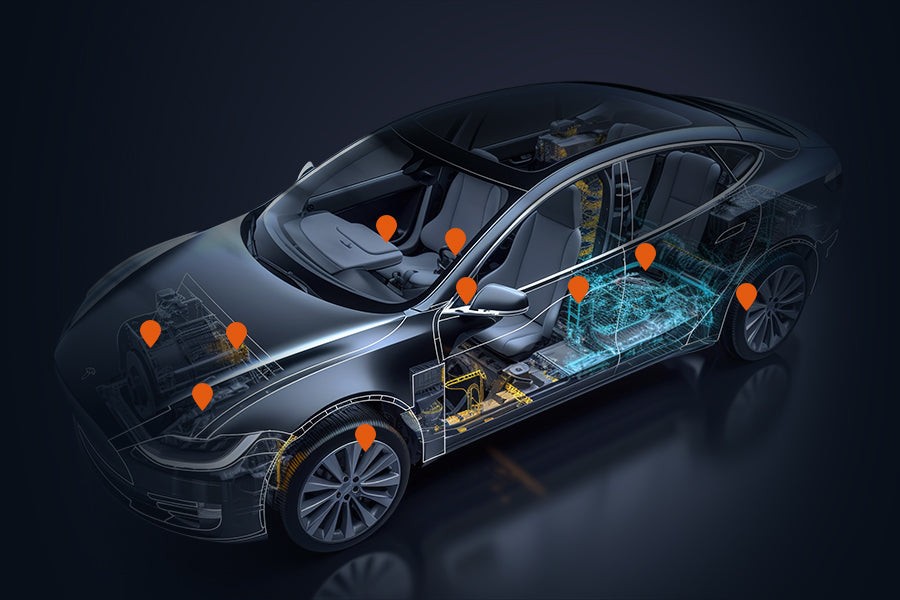Failing to connect your OBD2 scanner to your car’s ECU can be frustrating. This comprehensive guide explores common causes and provides step-by-step solutions to get your scanner communicating with your vehicle.
Understanding Why Your OBD2 Scanner Won’t Connect to the ECU
An OBD2 scanner, or On-Board Diagnostics scanner, is a vital tool for diagnosing car problems. It connects to the ECU, the car’s brain, to retrieve diagnostic trouble codes (DTCs) and other crucial data. However, several issues can prevent a successful connection. These include:
- Power Supply Problems: A low car battery or a lack of power to the OBD2 port can hinder the scanner’s operation.
- OBD2 Port Issues: A damaged or obstructed port will prevent a proper connection.
- Scanner Compatibility: Not all scanners are compatible with every vehicle make and model.
- Blown Fuse: A blown fuse related to the OBD2 system can cut off power to the port.
- Communication Protocol Mismatch: Vehicles use different communication protocols (e.g., CAN, ISO 9141, KWP2000). Using the wrong protocol prevents connection.
- Software Problems: Outdated or corrupted scanner software can cause connectivity failures.
Common Causes and Solutions for OBD2 Connection Problems
Power Supply Issues
Ensure your car battery is fully charged. Use a multimeter to check the voltage at the OBD2 port; it should read around 12 volts. A low voltage indicates a battery or charging system problem.
Faulty OBD2 Port
Inspect the OBD2 port for any visible damage, bent pins, or debris. Clean the port with compressed air or a specialized contact cleaner.
Scanner Compatibility
Confirm your scanner is compatible with your car’s year, make, and model. Consult the scanner’s manual or the manufacturer’s website for compatibility information.
Blown Fuse
Locate the fuse box (usually under the dashboard or in the engine compartment) and consult your car’s owner’s manual to identify the OBD2-related fuse. Check the fuse for damage and replace it if necessary.
Communication Protocol
Determine your vehicle’s communication protocol by checking the owner’s manual or using an online resource. Ensure your scanner is set to the correct protocol. Some advanced scanners automatically detect the protocol.
Software Issues
Update your scanner’s software to the latest version. This can often resolve compatibility issues and bugs that prevent connection.
Troubleshooting OBD2 Connection Problems: A Step-by-Step Guide
-
Check Power: Turn the ignition to the “accessory” position (not “on” or “start”). Use a multimeter to verify power at the OBD2 port.
-
Inspect the Port: Visually examine the port for damage and obstructions. Clean it with compressed air.
-
Verify Compatibility: Double-check your scanner’s compatibility with your vehicle.
-
Check Fuses: Locate and inspect the OBD2-related fuse.
-
Set the Correct Protocol: Determine and set the appropriate communication protocol on your scanner.
-
Update Software: Update your scanner’s software to the latest version.
-
Reset the Scanner: Disconnect and reconnect the scanner or perform a factory reset if possible.
-
Test with Another Car: Try connecting your scanner to a different vehicle to rule out a scanner malfunction.
-
Consult a Professional: If all else fails, seek assistance from a qualified mechanic.
Conclusion
Connecting your OBD2 scanner to the ECU is essential for diagnosing car problems. By understanding the common causes of connection failures and following the troubleshooting steps outlined in this guide, you can often resolve the issue yourself. Remember to always consult your vehicle’s owner’s manual and the scanner’s instructions for specific guidance. If the problem persists, seeking professional help is recommended.

